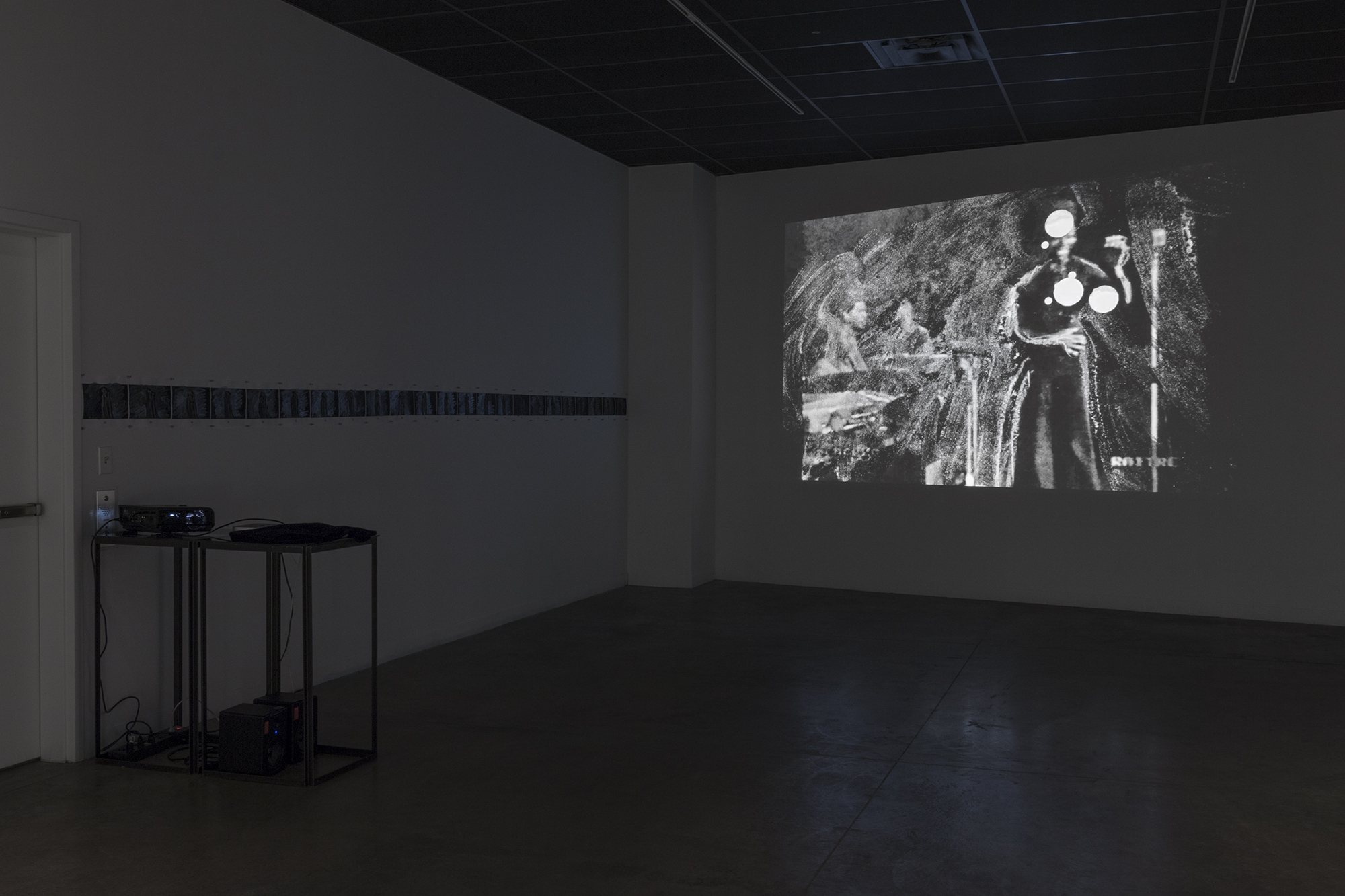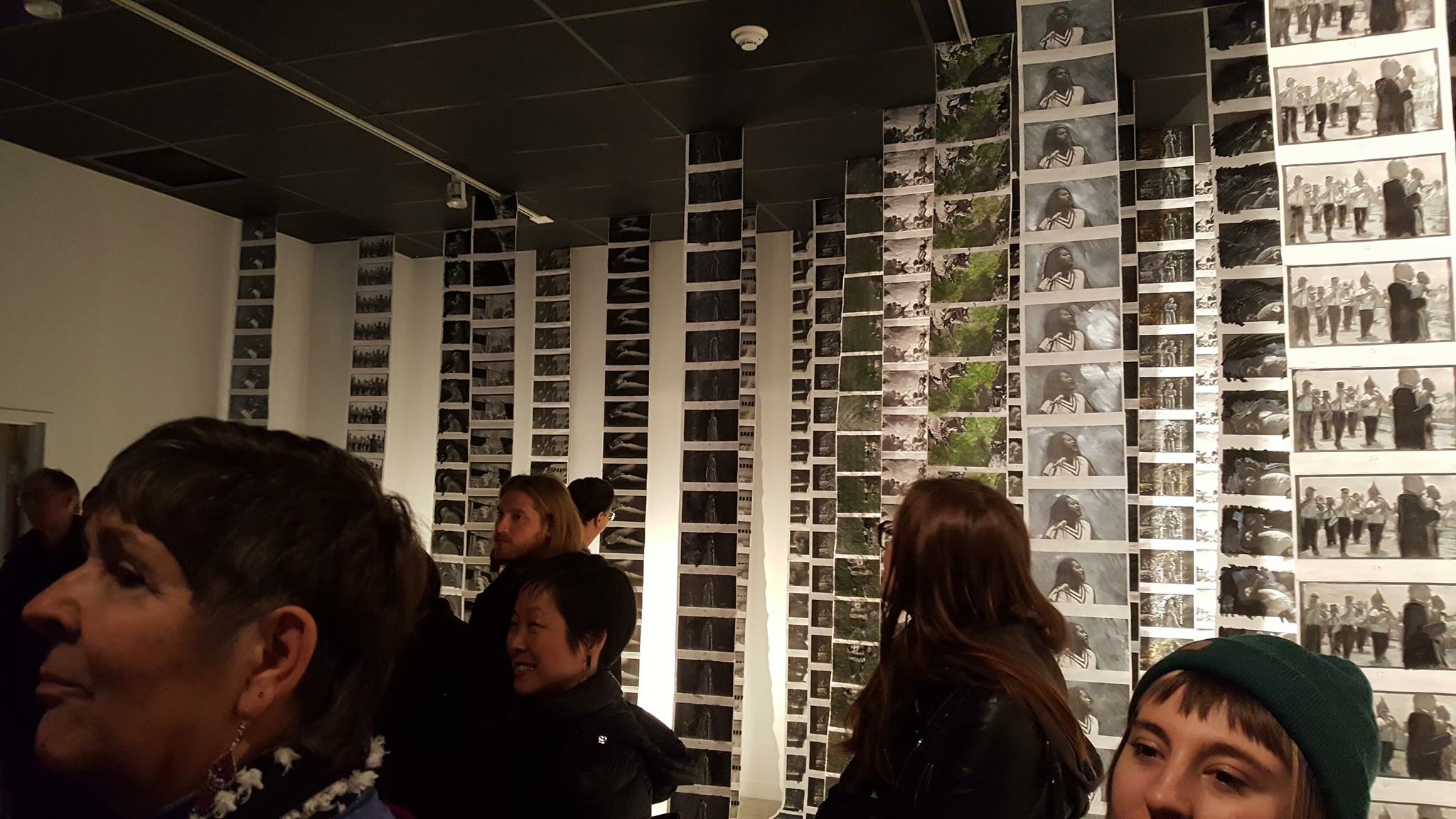PALIMPSEST
ˈpaləm(p)ˌsest/ something reused or altered but still bearing visible traces of its earlier form
This solo exhibition at The Sculpture Center in Cleveland reveals a process that I developed to make animated moving images that involves drawing/painting/retracing onto films. The source material is an archival film clip or filmed sequence that I have shot. I print out each individual “frame” of the film onto a piece of 8 x11”paper and hand paint each micro-moment of time. There are twenty-four frames that make up one second of time. Then these painted images are then re-photographed into what is a fully combined moving image sequence. I call this process DIG-TAC, which stands for for the intersection between digital (video) and tactile (painting/drawing). Formally, it is a cycle from film to painting, back to film, resulting in an emotional, psychologically intense viewing experience – a palimpsest of sorts in which the images embody layers of time being re-traced, re-membered, re-imagined.
Each of these cascading sequences that come from the ceiling to the floor in the exhibition are made of twenty-four individual “frames” which represents one second of time.
The Sculpture Center, Cleveland OH 2018
PALIMPSEST: Hand-painted animations and video projections
The images you see in this solo exhibition at The Sculpture Center in Cleveland are animated sequences from the film, The Foreigner’s Home (2017) a full-length documentary film that I co-directed and produced that explores Toni Morrison’s artistic and intellectual vision. The animated DIG-TAC images are of Nina Simone, Martin Luther King, Lil’ Buck, a New Orleans second line, D’de Kabal, Toni Morrison, a Syrian refugee, and The Raft of the Medusa a painting byTheodore Gericault, a bird in hand sequence based on a parable from Toni Morrison’s Nobel acceptance speech in 1993. The animations were designed to build a visual world to support the prophetic words and ideas of Toni Morrison in the documentary film I recently made which explores her artistic and intellectual vision through “The Foreigner’s Home” 2006 exhibition at the Louvre in Paris, France. The film presents a series of candid and incisive exchanges about race, identity, “foreignness” and art’s redemptive power.
The Sculpture Center, Cleveland OH 2018















